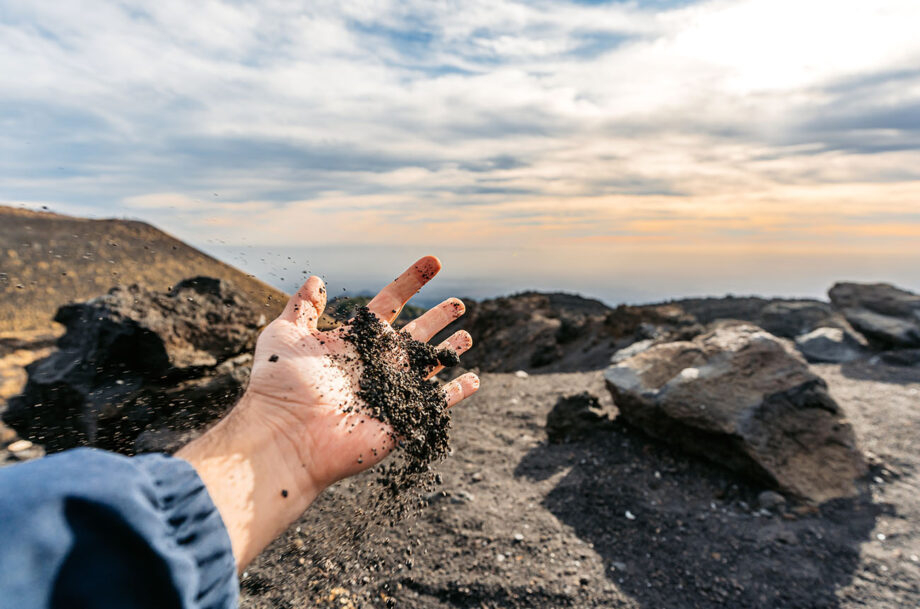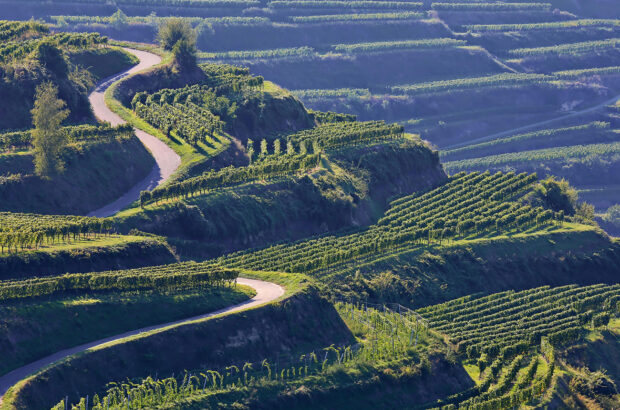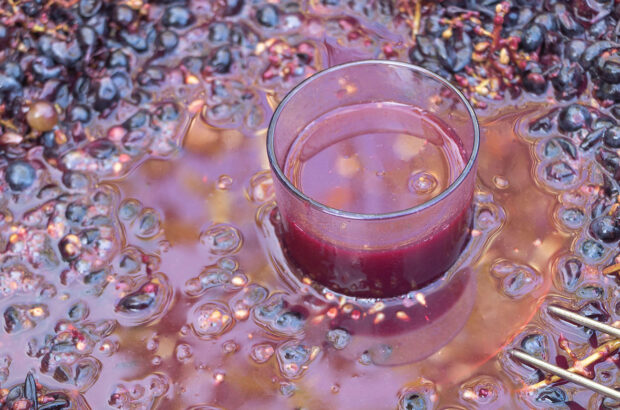Grapevines are remarkably adaptable. They thrive on limestone, clay, chalk or gravel, and each soil type shapes a wine’s structure and flavour.
The chalk of Champagne, the terra rossa of Coonawarra, and the gravel of Bordeaux’s Left Bank have all become shorthand for regional identity.
Yet few soils capture the imagination like volcanic earth, which covers just 1% of the planet’s surface. Volcanic vineyards are among the rarest – and their wines among the most compelling.
The science beneath our feet
Volcanic soils are formed from cooled lava, pumice and ash. Unlike older sedimentary soils, they are geologically young and chemically active.
‘Volcanic soils are particularly distinctive in wine production,’ explains Michele Brusaferri, agronomist at Tenuta Tascante on Mount Etna.
‘They are rich in micro-elements such as sodium, potassium and magnesium, within a porous, draining structure that provides a balance of oxygen and humidity. The vines may struggle at first, but once the roots penetrate, they find everything they need for healthy growth.’
That struggle is crucial. On poor, stony volcanic soils, vines are forced to dig deep for water and nutrients. Yields are smaller, the berries more concentrated, and the resulting wines often display depth, intensity and an unmistakable mineral edge.
Tension on Tenerife
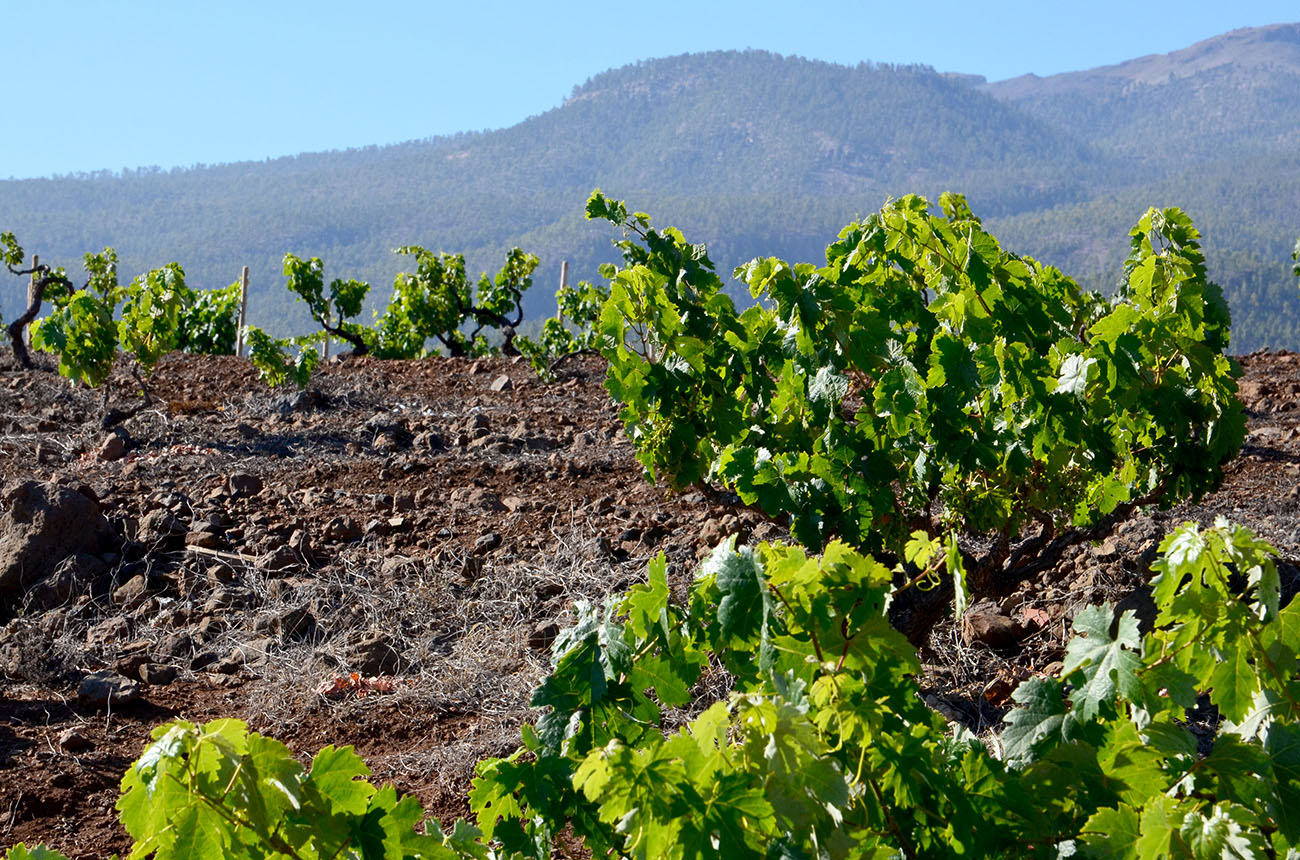
A vineyard on Tenerife. Credit: svf74 / iStock / Getty Images Plus
Jonatan García Lima of Suertes del Marqués, one of Tenerife’s leading producers, makes a key distinction: ‘I make a difference between acid volcanic soils and basic volcanic soils. In acid soils the wines are more mineral, higher in acidity and with greater tension, but they are also more reductive. Both types share salinity, which is also influenced by being on islands.
‘The vines adapt very well to volcanic soils as they are very rich and fertile, especially in areas with rain, mostly on the north face of the islands at high elevation – Tenerife, La Palma, Gran Canaria. For me, when I taste wines from Santorini, the Azores or the Canaries, the common factor is salinity and a feeling of purity.
‘On the Canary Islands, all vines remain ungrafted, which is something special. With centuries-old vineyards, continuous mutations and natural crossings, we have a viticultural heritage of more than five centuries – an inheritance for the world of wine.’
Elegance on Etna
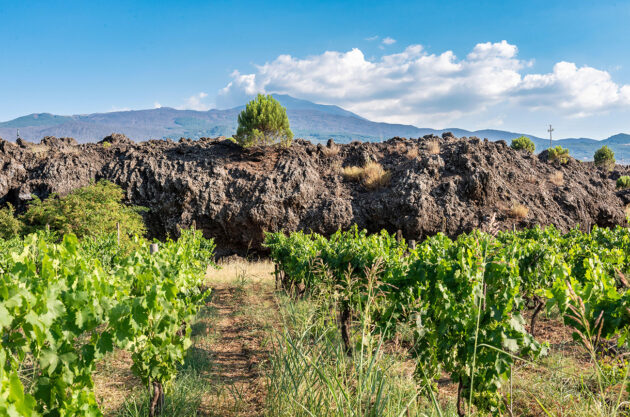
A vineyard on Etna in which the 1981 lava flow finally stopped. Credit: Alex Ramsay/ Alamy
Nowhere is volcanic viticulture more celebrated than on Sicily’s active volcano: Mount Etna. Vineyards here sit on a shifting mosaic of continuous lava flows, with more than 40 distinct soil types mapped across contrade, or single-vineyard districts.
‘The hallmark characteristics of wines from volcanic soils are freshness and, above all, minerality,’ says Brusaferri. ‘On Etna, Nerello Mascalese may appear pale in colour, but the wines have astonishing depth. They carry flinty, balsamic and even liquorice notes – aromas and textures clearly marked by the volcanic earth.’
Carlo Ferrini, renowned oenologist and founder of Alberelli di Giodo on Etna, emphasises the role of minerals: ‘The key feature of volcanic soils is their richness in minerals. The vines thrive here: their roots reach great depths without major obstacles, and the wines show an unmistakable minerality. These are wines that express themselves in length rather than width, with elegance as their ultimate goal.’
Survival on Santorini
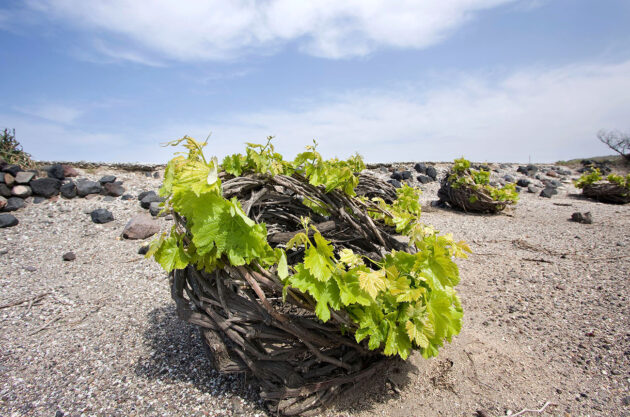
A traditional basket trained (‘kouloura’) vine on Santorini. Credit: Susana Guzman/ Alamy
Across the Mediterranean, Santorini’s vineyards grow on pumice and ash left by the Minoan eruption 3,600 years ago. Rainfall is minimal, and organic matter is almost absent, yet the porous pumice ‘aspa’ traps precious moisture, sustaining ungrafted vines that can be more than a century old.
‘The volcanic soil is crucial to the survival of our dry-farmed vineyards,’ says Stratos Guillame Xyrafis of Domaine Sigalas. ‘Combined with the sea fog that drifts in at night, the pumice allows the vines to endure extreme drought.’
The results are wines of remarkable purity. Assyrtiko from Santorini is renowned for its piercing acidity and saline edge. ‘It’s as if the volcanic character is etched into the wine itself,’ notes Yannis Valambous of Vassaltis Vineyards. ‘The struggle of the vine translates into concentration and purity, with tension and minerality you can taste a mile away.’
Why volcanic wines stand apart
So what makes volcanic wines special? It is partly science: mineral-rich, fast-draining soils that encourage deep roots and concentrated fruit. It is partly resilience: vines surviving heat, drought and wind on ungrafted rootstocks.
But most of all, it is sensory. Volcanic wines tend to be vivid rather than heavy, bursting with acidity, salinity and brightness. They capture, perhaps better than any other style, the drama of the landscapes from which they spring. Volcanic wines don’t just speak of place – they erupt from it.


